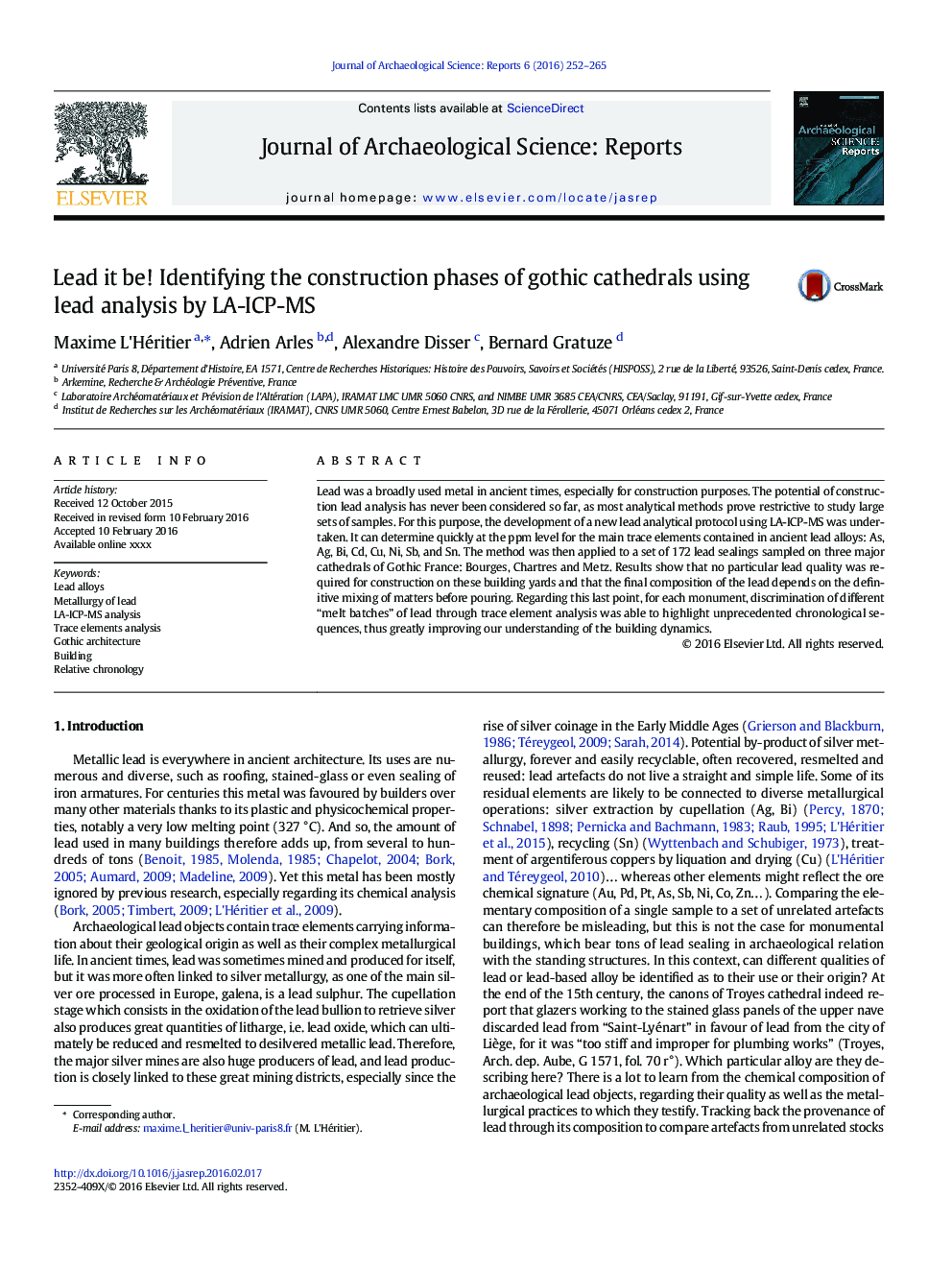| Article ID | Journal | Published Year | Pages | File Type |
|---|---|---|---|---|
| 7446132 | Journal of Archaeological Science: Reports | 2016 | 14 Pages |
Abstract
Lead was a broadly used metal in ancient times, especially for construction purposes. The potential of construction lead analysis has never been considered so far, as most analytical methods prove restrictive to study large sets of samples. For this purpose, the development of a new lead analytical protocol using LA-ICP-MS was undertaken. It can determine quickly at the ppm level for the main trace elements contained in ancient lead alloys: As, Ag, Bi, Cd, Cu, Ni, Sb, and Sn. The method was then applied to a set of 172 lead sealings sampled on three major cathedrals of Gothic France: Bourges, Chartres and Metz. Results show that no particular lead quality was required for construction on these building yards and that the final composition of the lead depends on the definitive mixing of matters before pouring. Regarding this last point, for each monument, discrimination of different “melt batches” of lead through trace element analysis was able to highlight unprecedented chronological sequences, thus greatly improving our understanding of the building dynamics.
Related Topics
Social Sciences and Humanities
Arts and Humanities
History
Authors
Maxime L'Héritier, Adrien Arles, Alexandre Disser, Bernard Gratuze,
